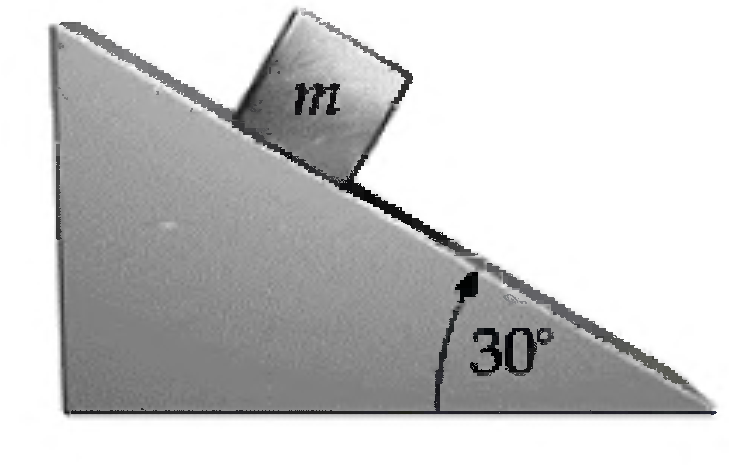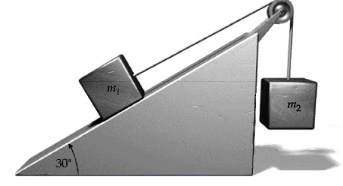Question: (Multiple choice) (1) True or false: (a) The force of static friction always equals s F n . (b) The force of friction always
(Multiple choice)
(1)
True or false:
(a) The force of static friction always equals μsFn.
(b) The force of friction always opposes the motion of an object.
(c) The force of friction always opposes sliding.
(d) The force of kinetic friction always equals μkFn.
(2)
A block of mass m rests on a plane inclined at an angle θ with the horizontal. It follows that the coefficient of static friction between the block and plane is
(a) µs ≥ g.
(b) µs = tan θ.
(c) µs ≤ tan θ.
(d) µs ≥ tan θ.
(3)
A block of mass m is at rest on a plane inclined at an angle of 30° with the horizontal, as in
Figure 5-38. Which of the following statements about the force of static friction is true?
(a) fs > mg
(b) fs > mg cos 30°
(c) fs = mg cos 30°
(d) fs = mg sin 30°
(e) None of these statements is true.

(4)
A block of mass m slides at constant speed down a plane inclined at an angle q with the horizontal. It follows that
(a) μk = mg sin Ө.
(b) μk = tan Ө.
(c) μk = 1 - cos Ө.
(d) μk = cos Ө - sin Ө.
(5)
A block of wood is pulled by a horizontal string across a horizontal surface at a constant velocity with a force of 20 N. The coefficient of kinetic friction between the surfaces is 0.3. The force of friction is
(a) Impossible to determine without knowing the mass of the block.
(b) Impossible to determine without knowing the speed of the block.
(c) 0.3 N.
(d) 6N.
(e) 20 N.
(6)
A block of mass m is pulled at constant velocity across a horizontal surface by a string as in Figure. The magnitude of the frictional force is
(a) μkmg.
(b) T cos Ө.
(c) μk(T - mg).
(d) μkT sin Ө.
(e) μk(mg + T sin Ө).

(7)
A block on a horizontal plane is given an initial velocity v. It comes to rest after a displacement d. The coefficient of kinetic friction between the block and the plane is given by
(a) µk = v2 d/2g.
(c) µk = v2g/d2.
(b) µk = v2/2dg.
(d) None of the above.
(8)
A block of mass m1 = 250g is at rest on a plane that makes an angle θ = 30° above the horizontal (Figure). The coefficient of kinetic friction between the block and the plane is µk = 0.100. The block is attached to a second block of mass m2 = 200 g that hangs freely by a string that passes over a frictionless and massless pulley. When the second block has fallen 30.0 cm, its speed is
(a) 83 cm/s.
(b) 48 cm/s.
(c) 160 cm/s.
(d) 59 cm/s.
(e) 72 cm/s.

30
Step by Step Solution
3.36 Rating (171 Votes )
There are 3 Steps involved in it
1 a False b True c True d True 2 d 3 d f s must equal in magni... View full answer

Get step-by-step solutions from verified subject matter experts
Document Format (1 attachment)
10-P-M-L-M (678).docx
120 KBs Word File


